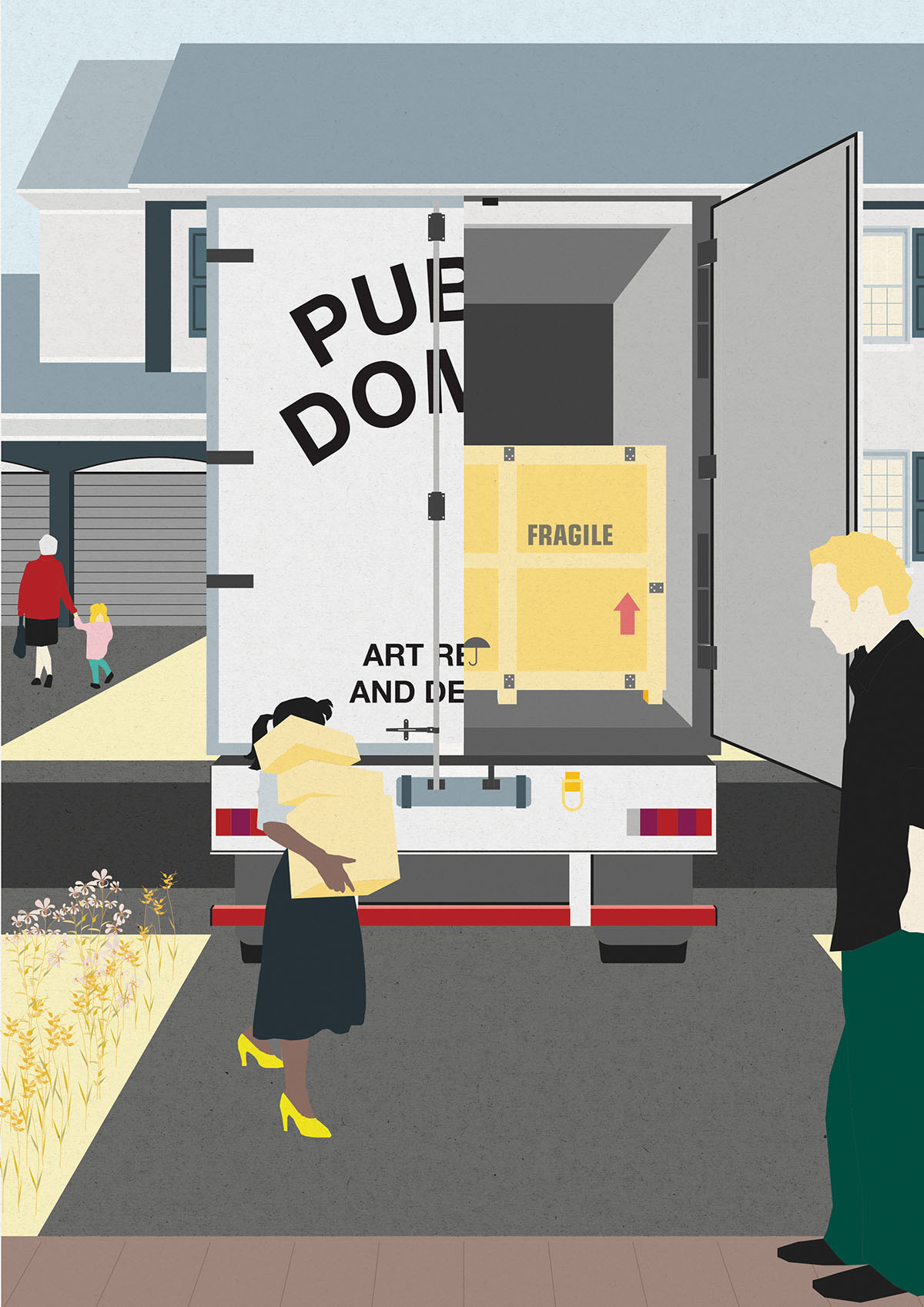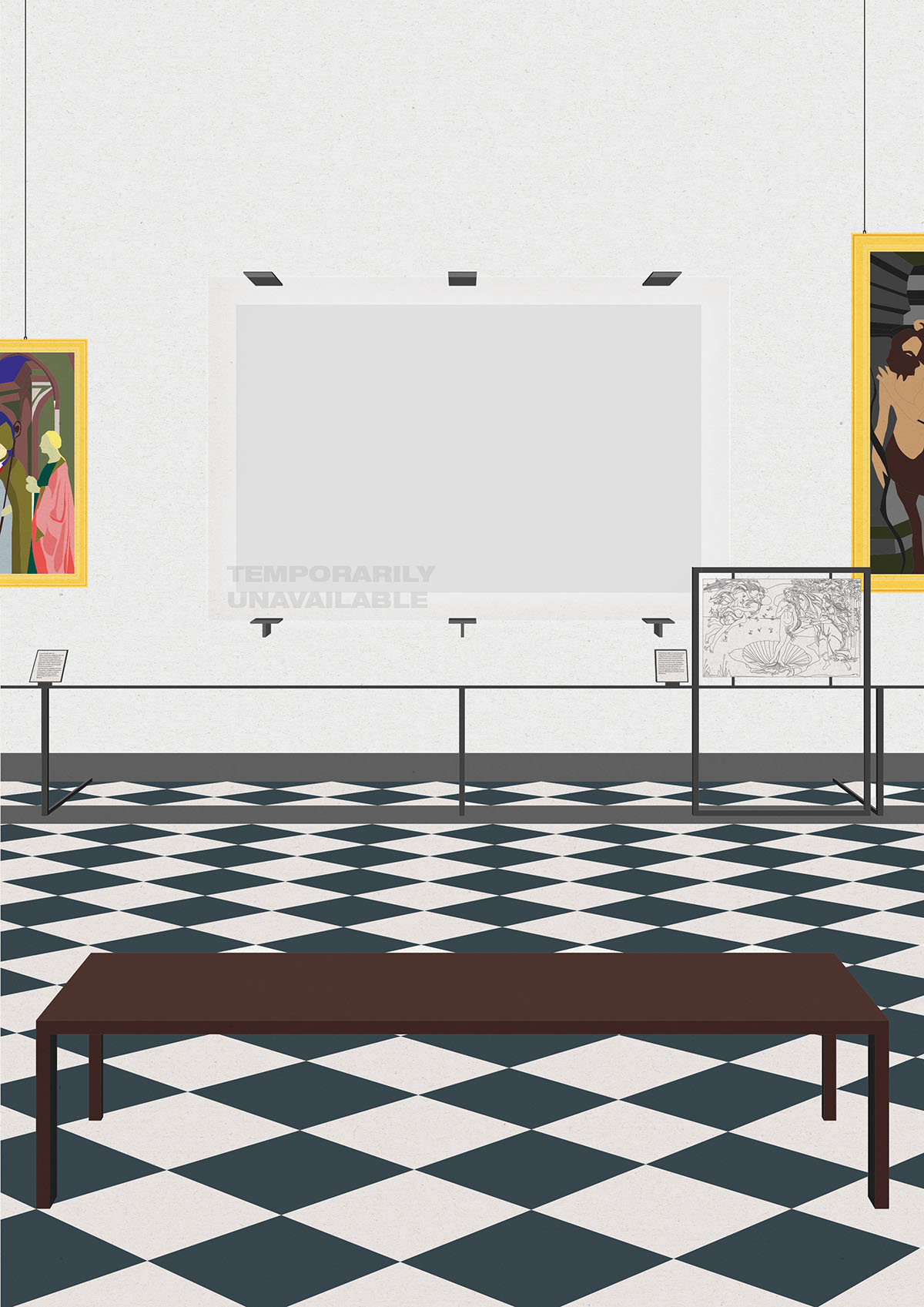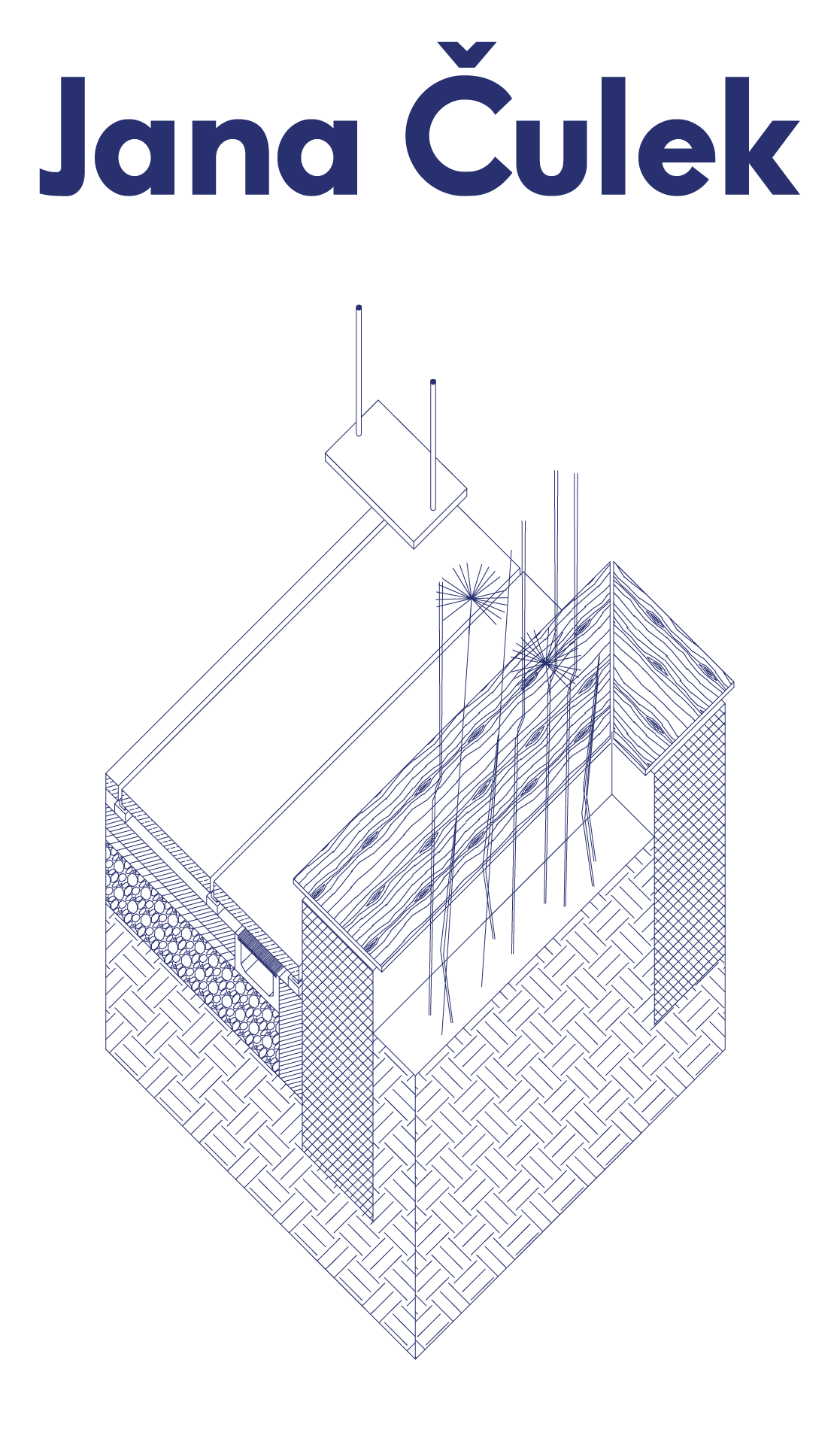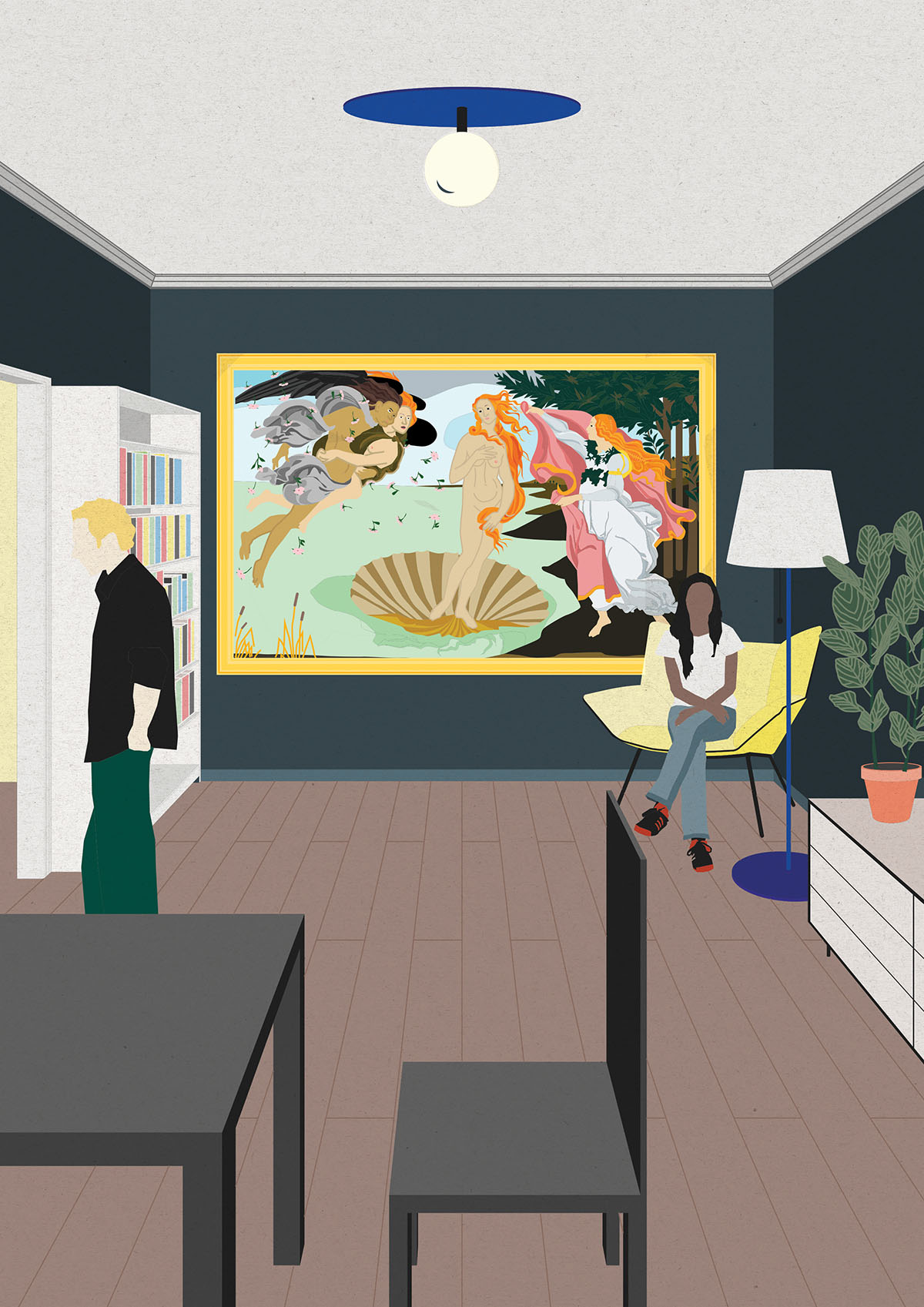P ublic Domain questions today’s notion of the art museum as a place of peaceful contemplation and admiration. Most of the worlds large museums, containing centuries of artistic masterpieces, have become busy tourist destinations rather than spaces of enlightenment. Art is surrounded by layers of defence, protecting it against the crowded masses trying to have a selfie with the Mona Lisa. The paintings are covered with layers of plexiglass, the sculptures surrounded with wire. When wanting to view a masterpiece, one needs to travel through the vast halls and corridors, pushing through confused masses, to arrive in front of a painting or sculpture, only to find it completely blocked by a guided tour slowly passing through the building.
Public Domain proposes a system that disrupts the common way of viewing art. A system in which one can borrow a piece of art and admire it for a limited amount of time in their own home. Art becomes accessible to all people, anywhere in the world. The masterpiece is no longer a stationary object, bound in its plastic shell, but rather a fleeting moment of inspiration, experienced in a place of one’s choosing, only to be passed on to somebody else.
This project was awarded an honourable mention at the Non Architecture Competitions – Showing and is featured in the same named book.



